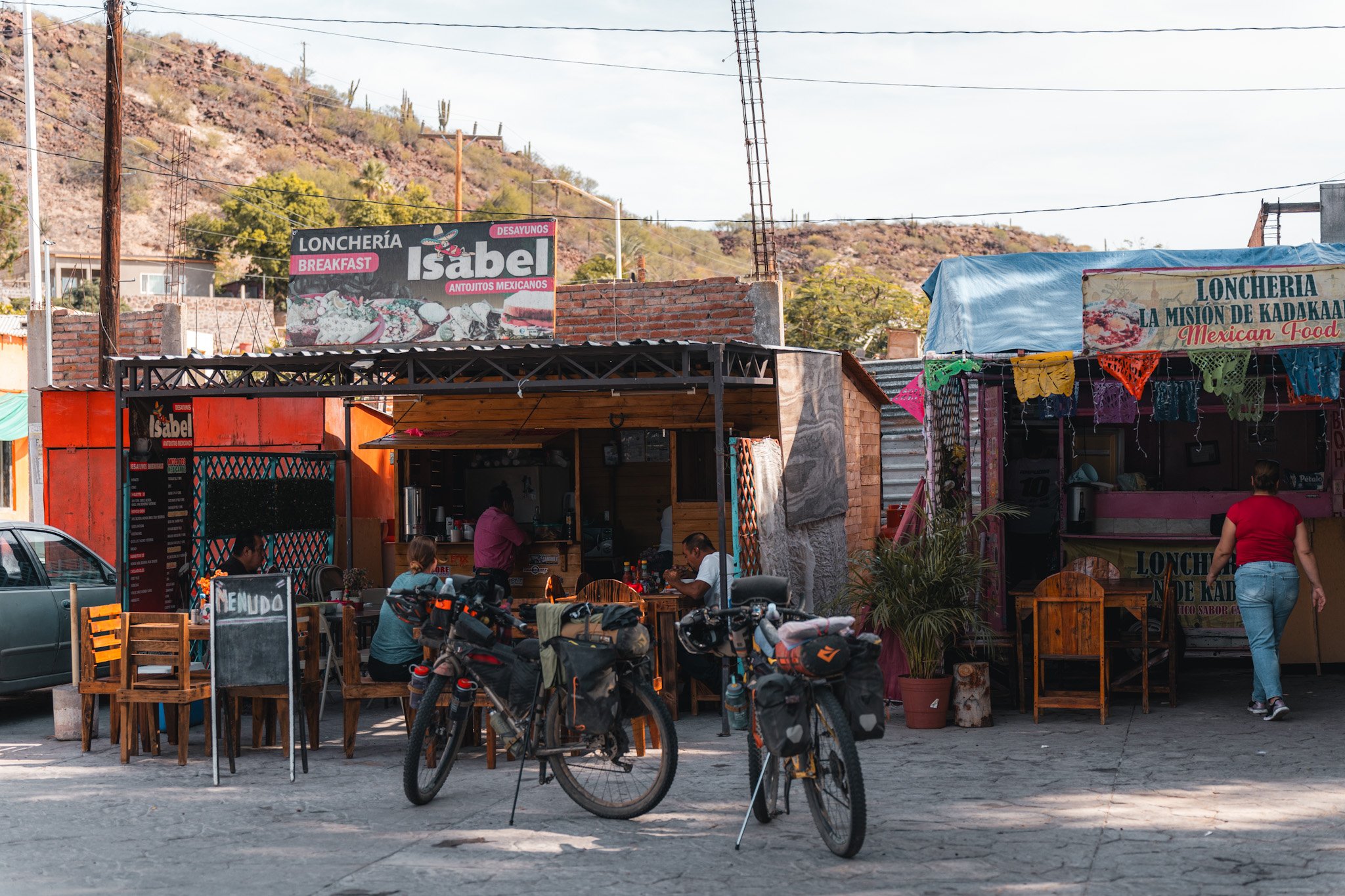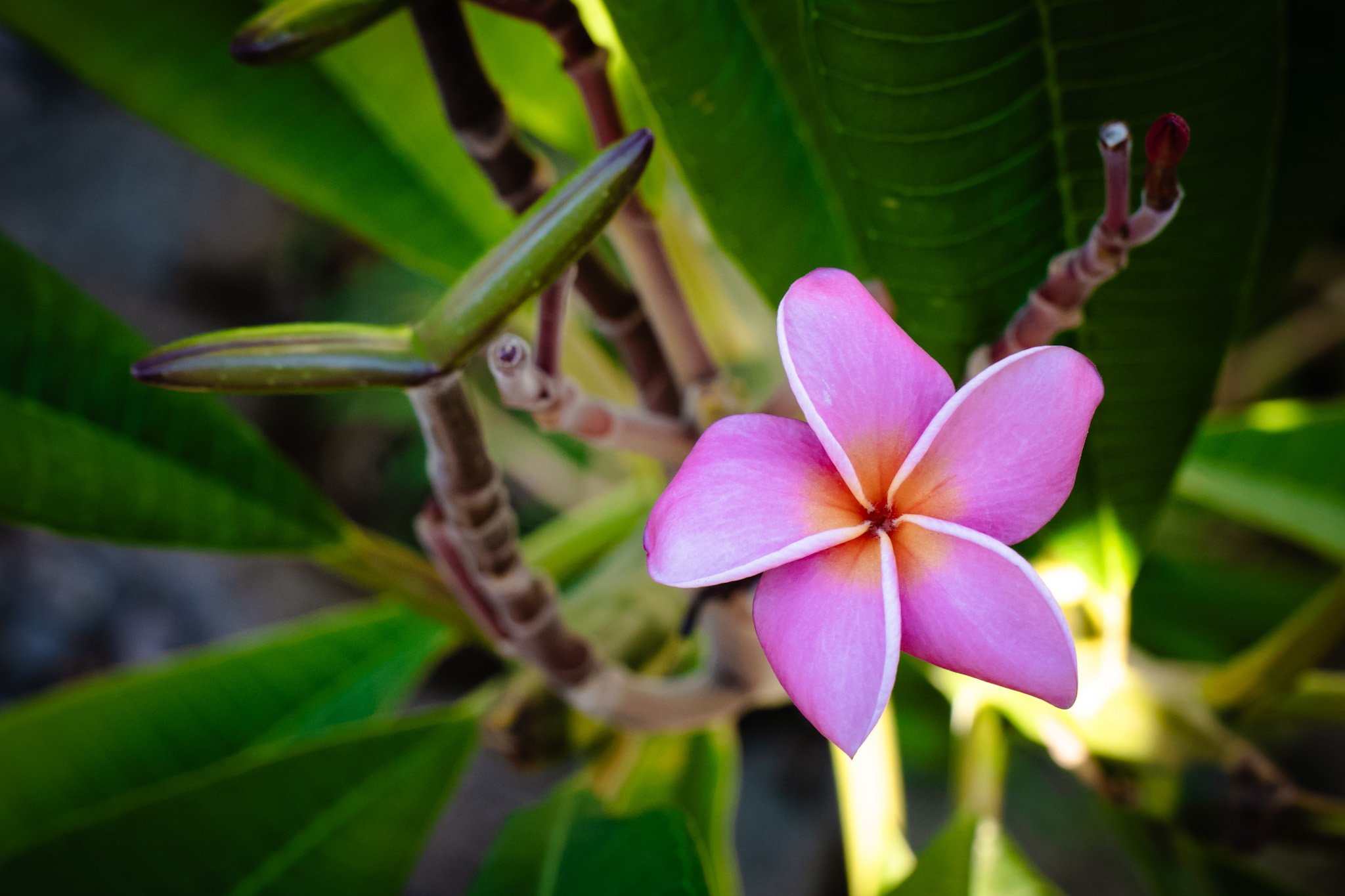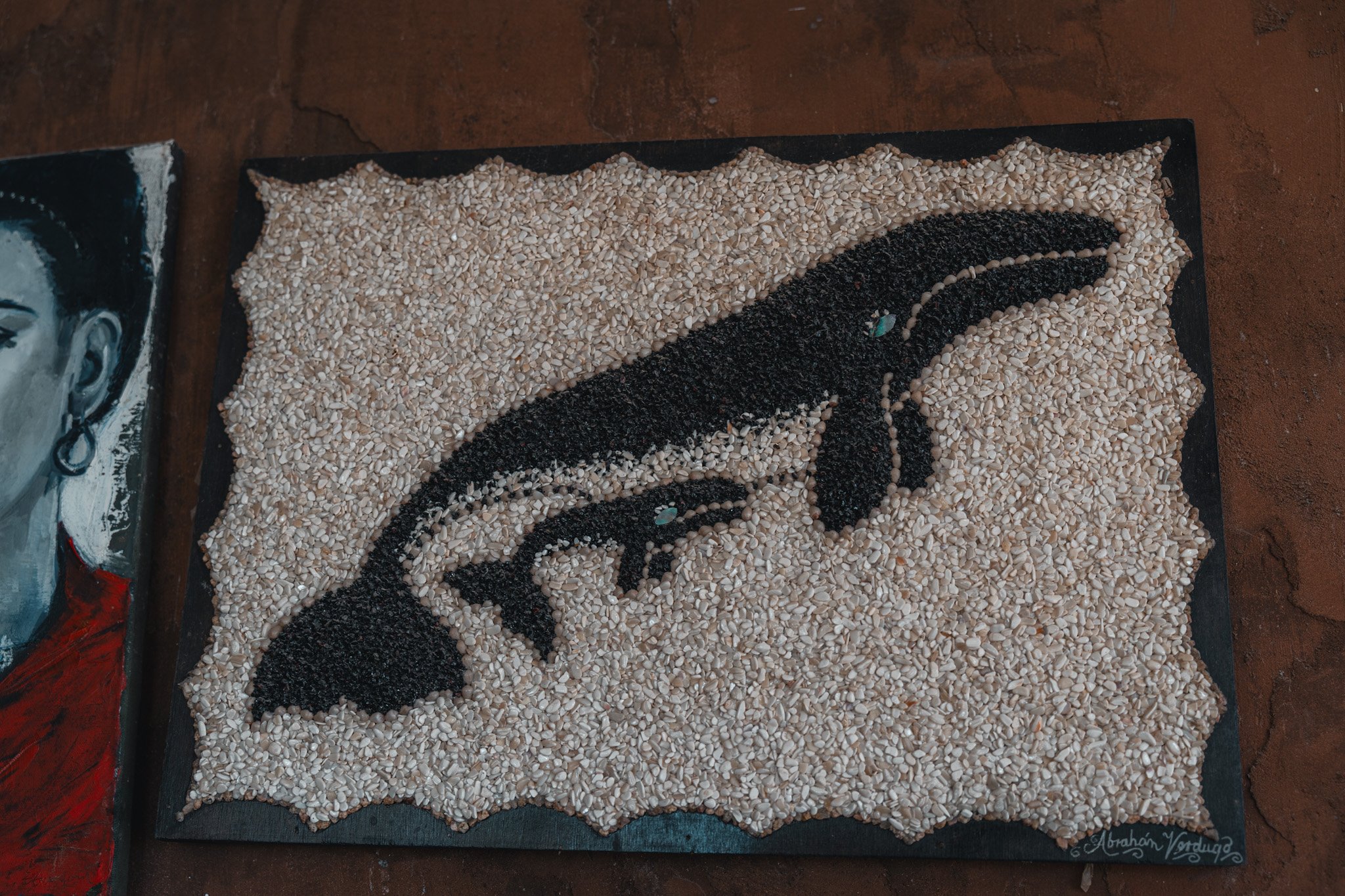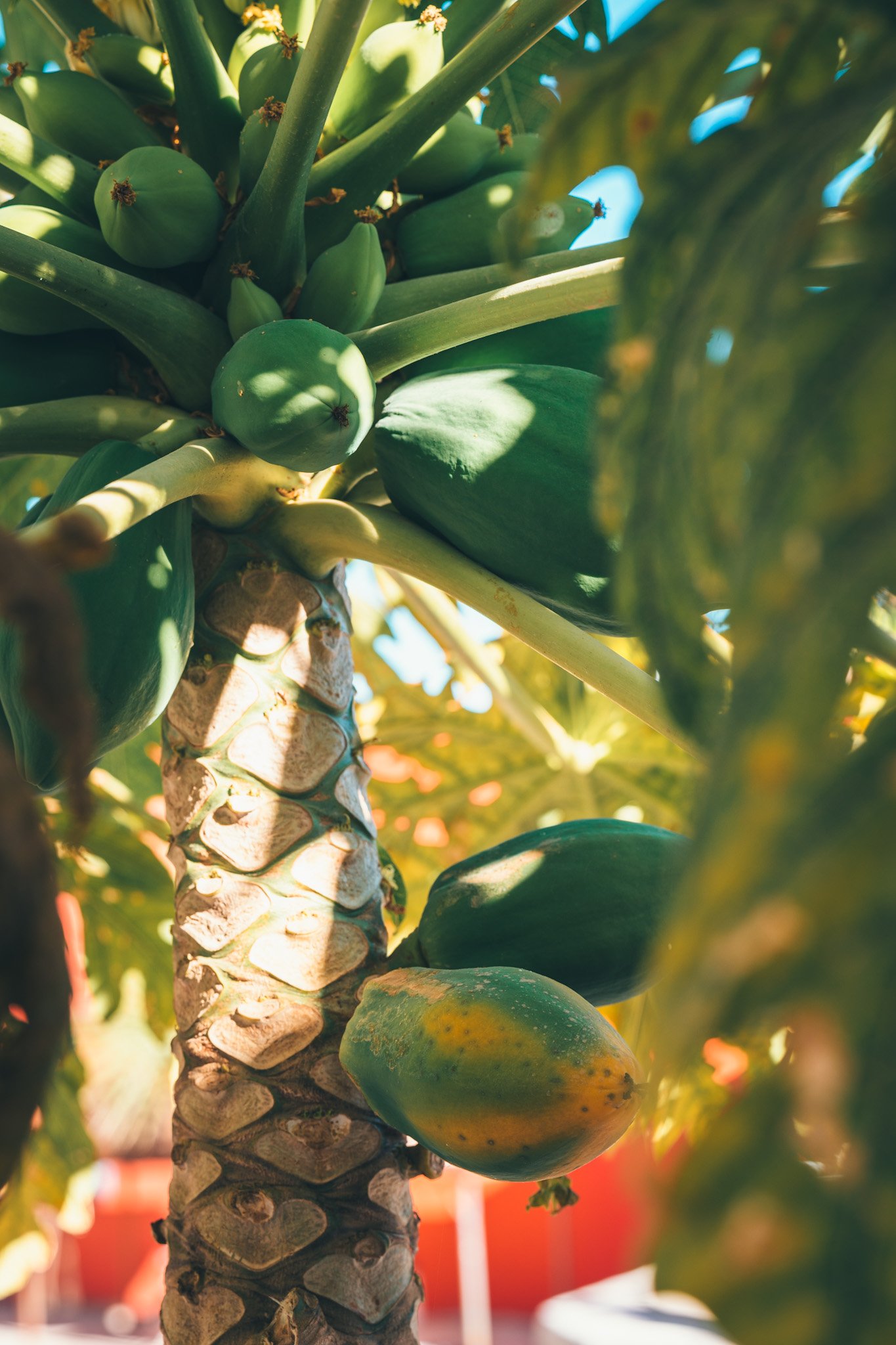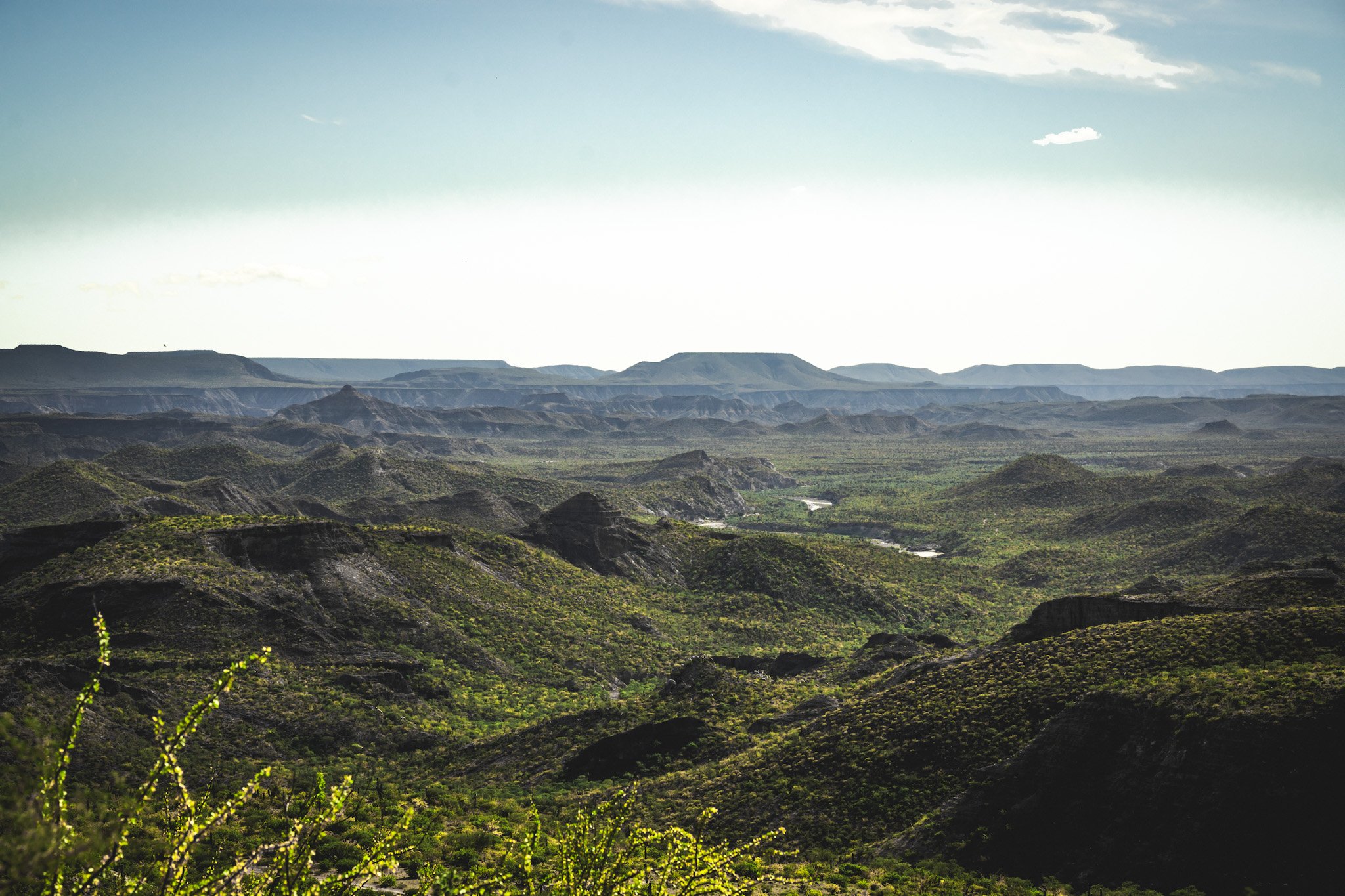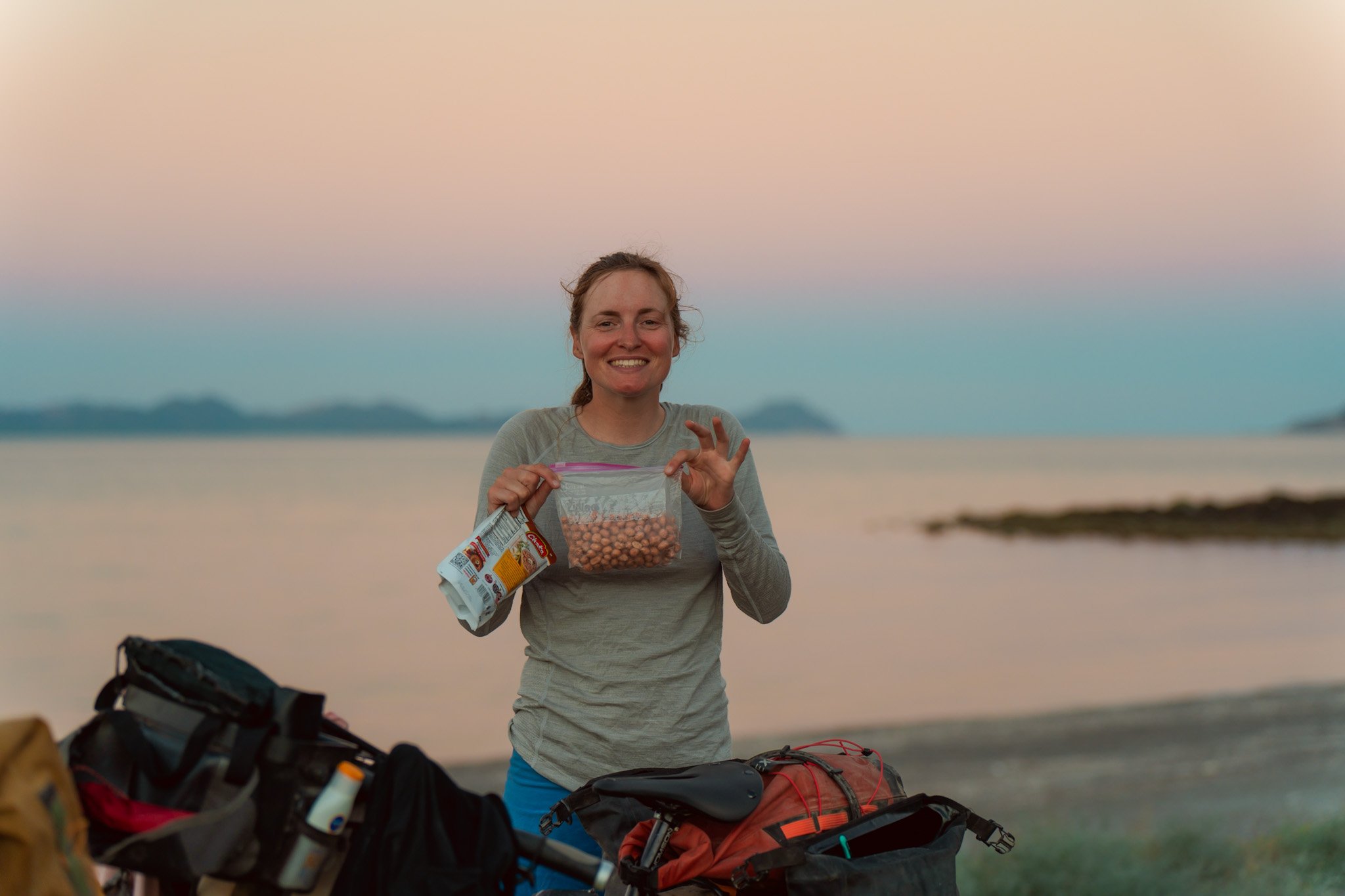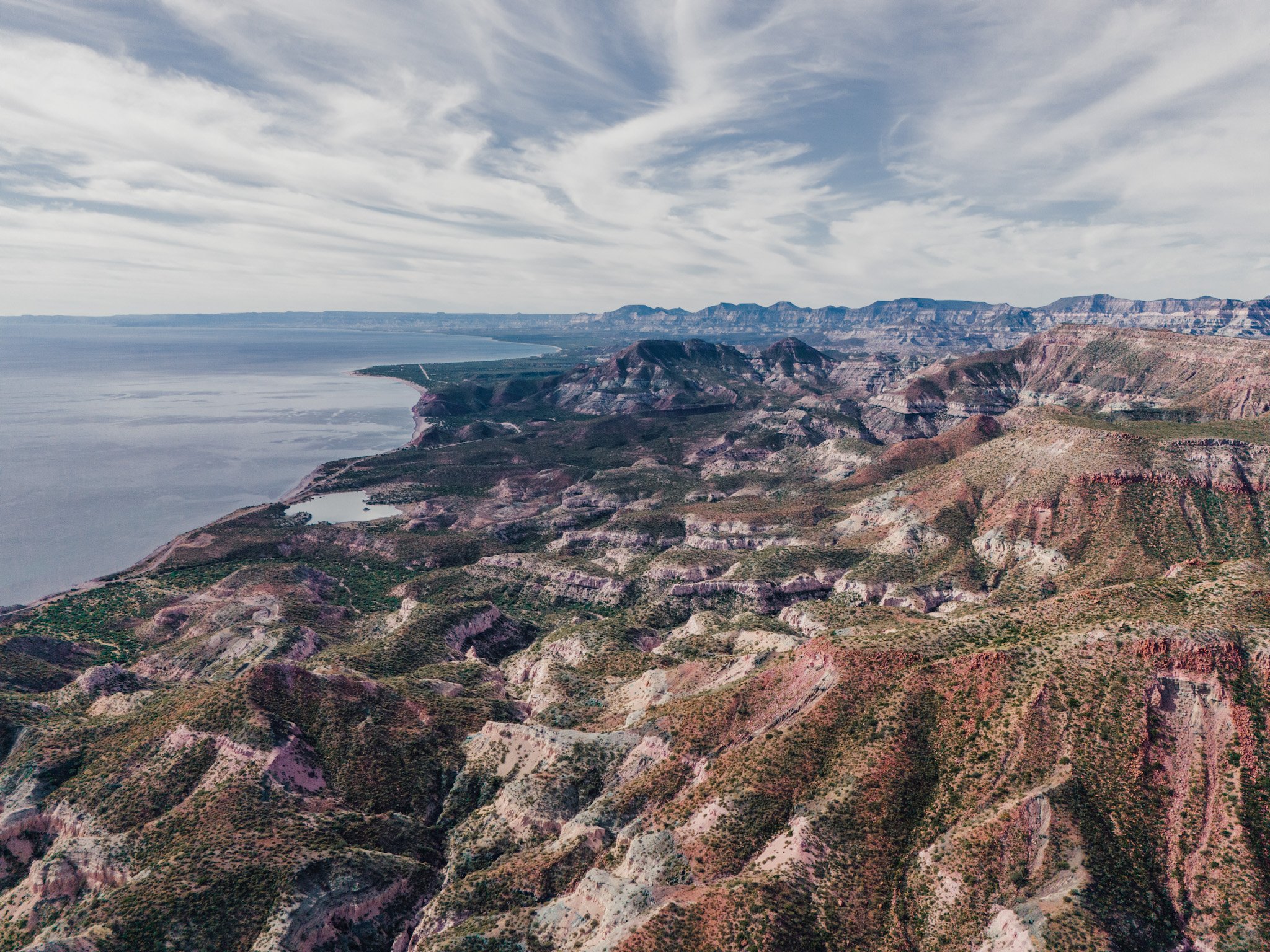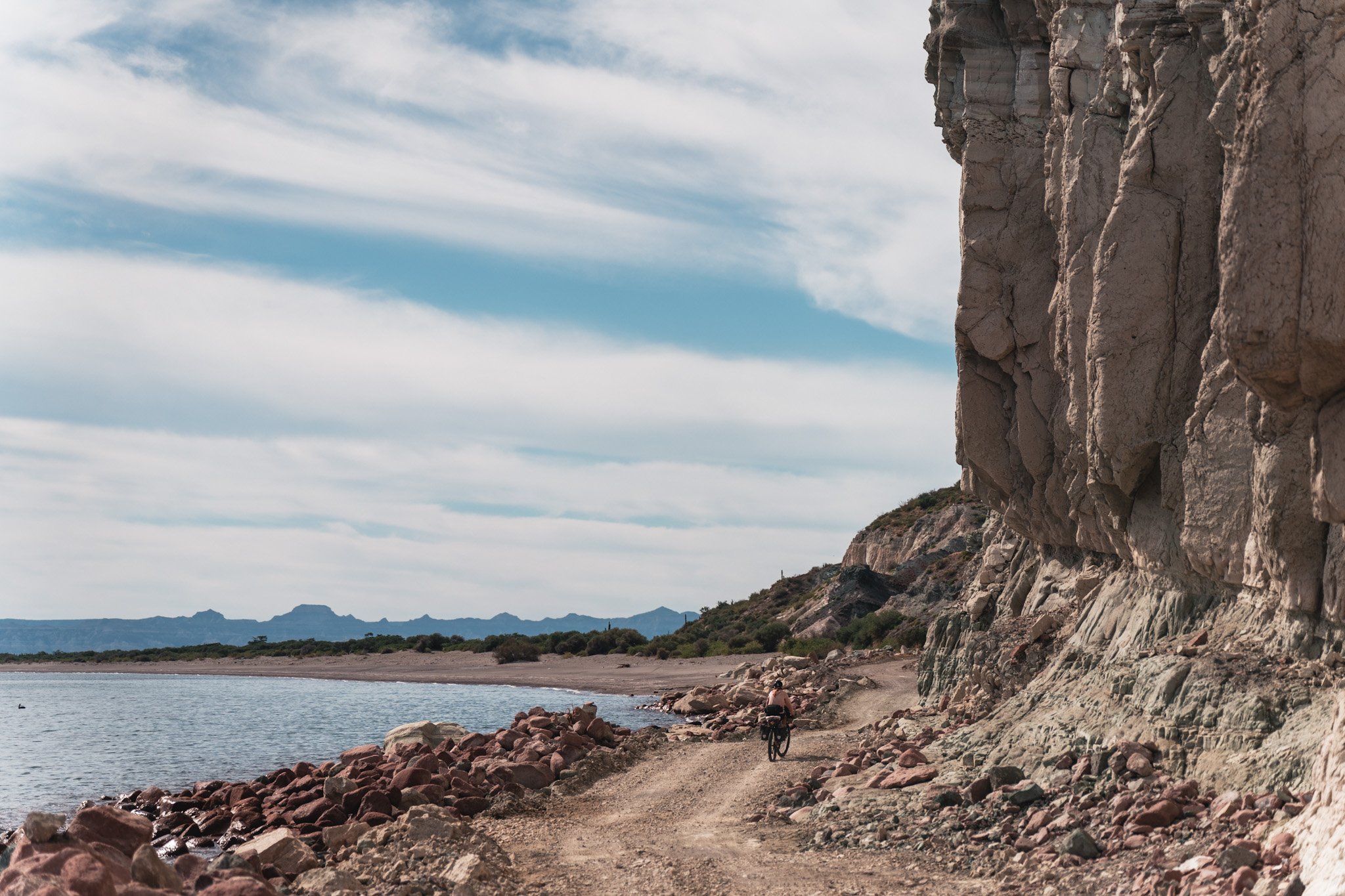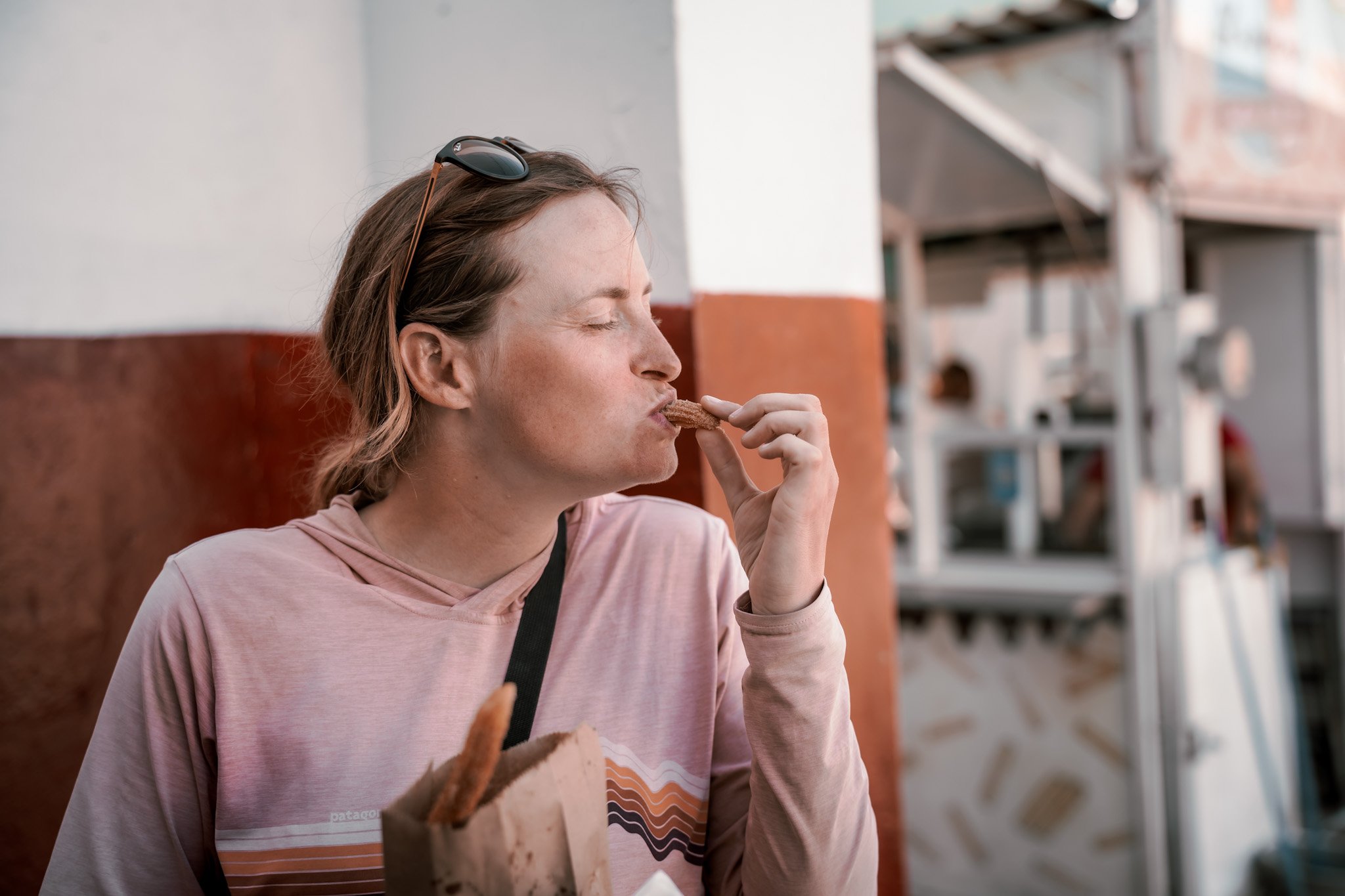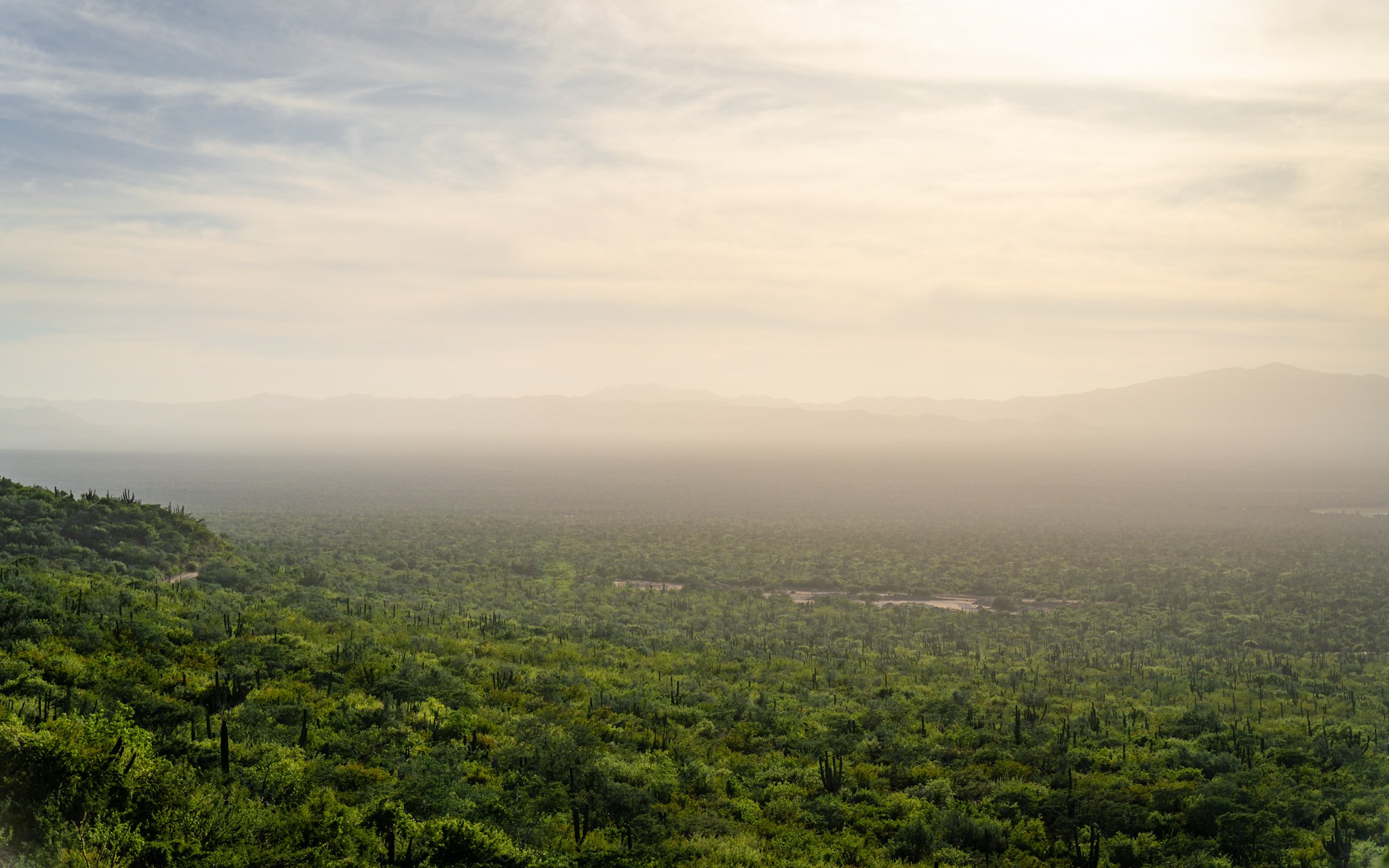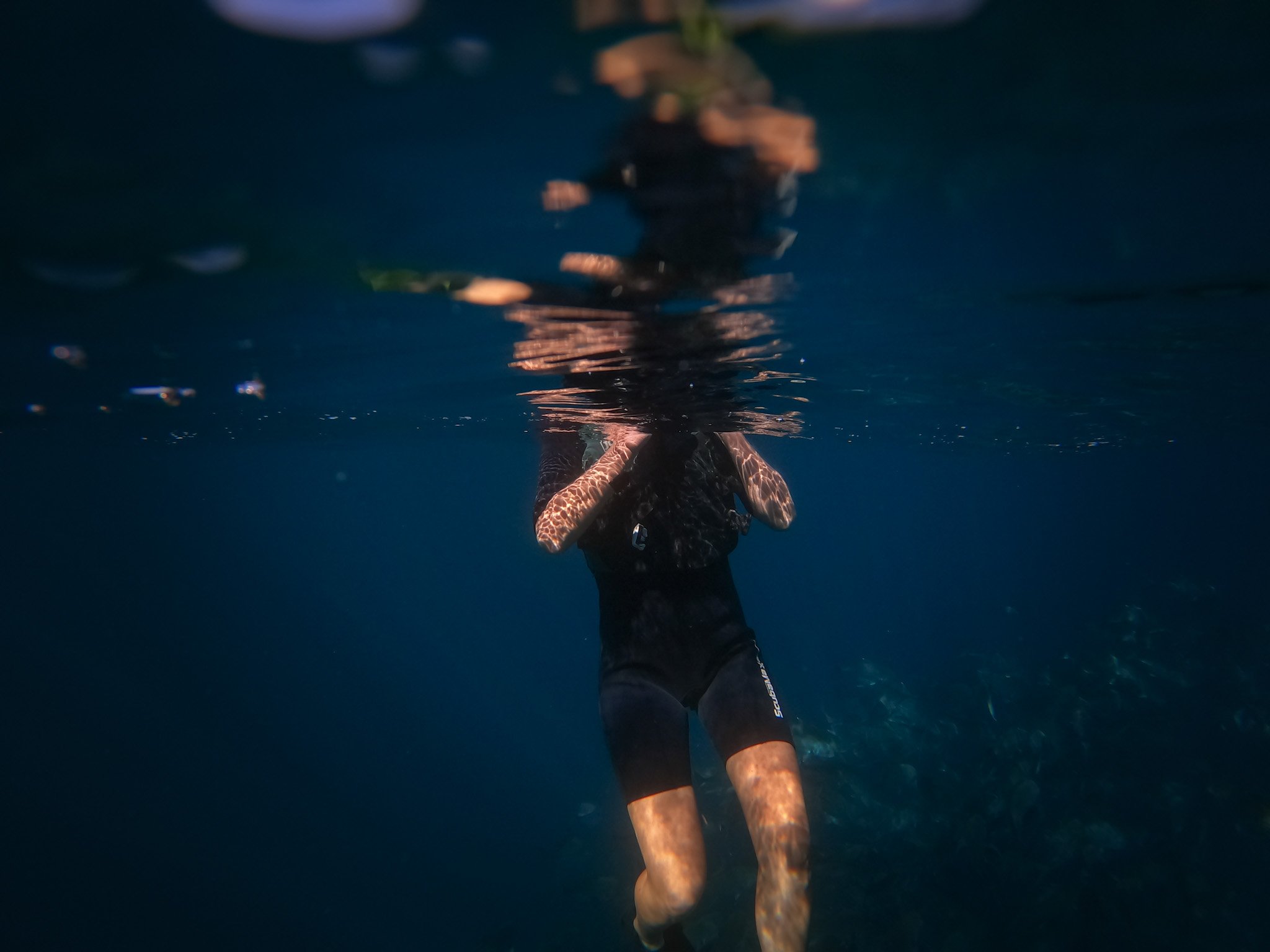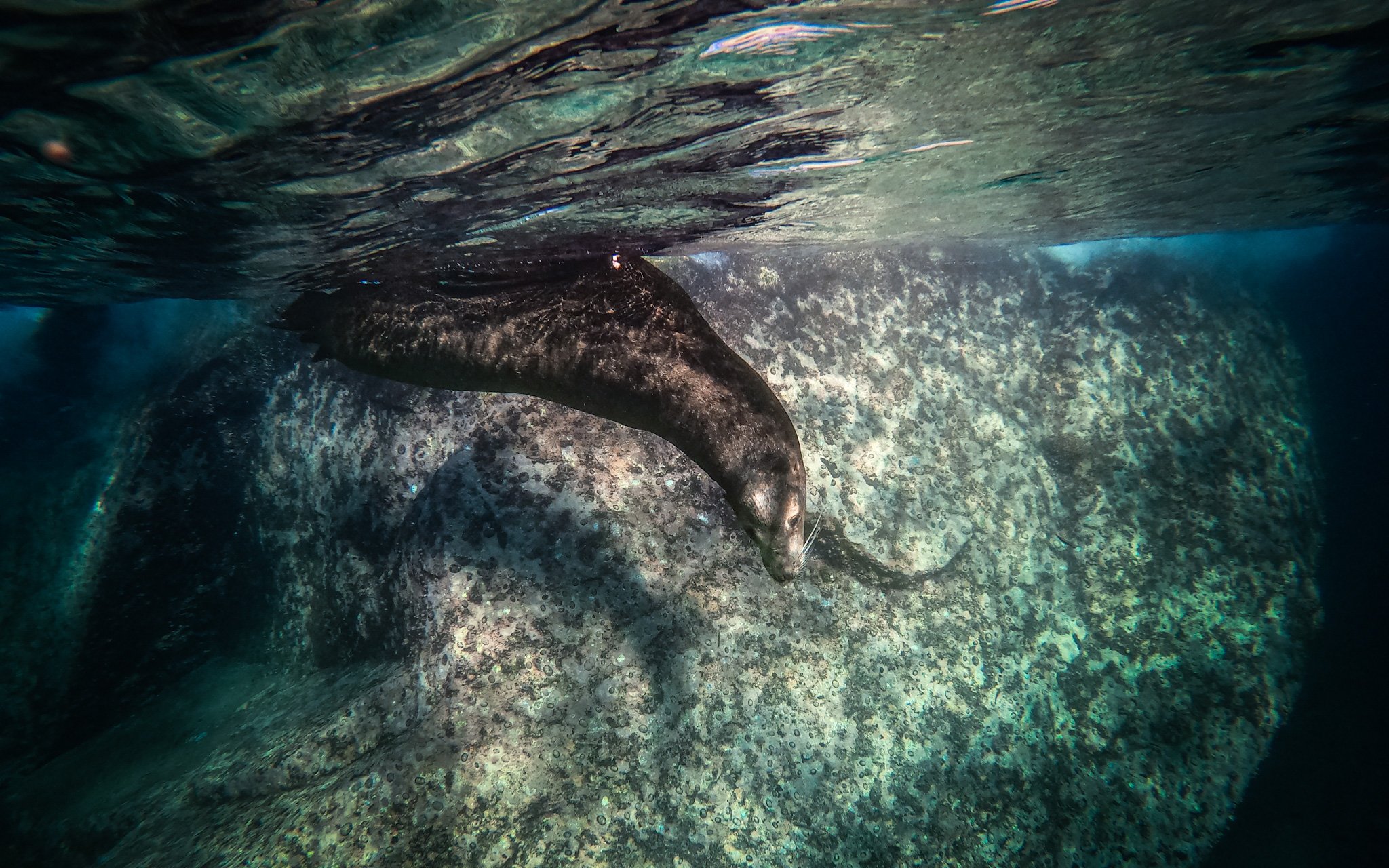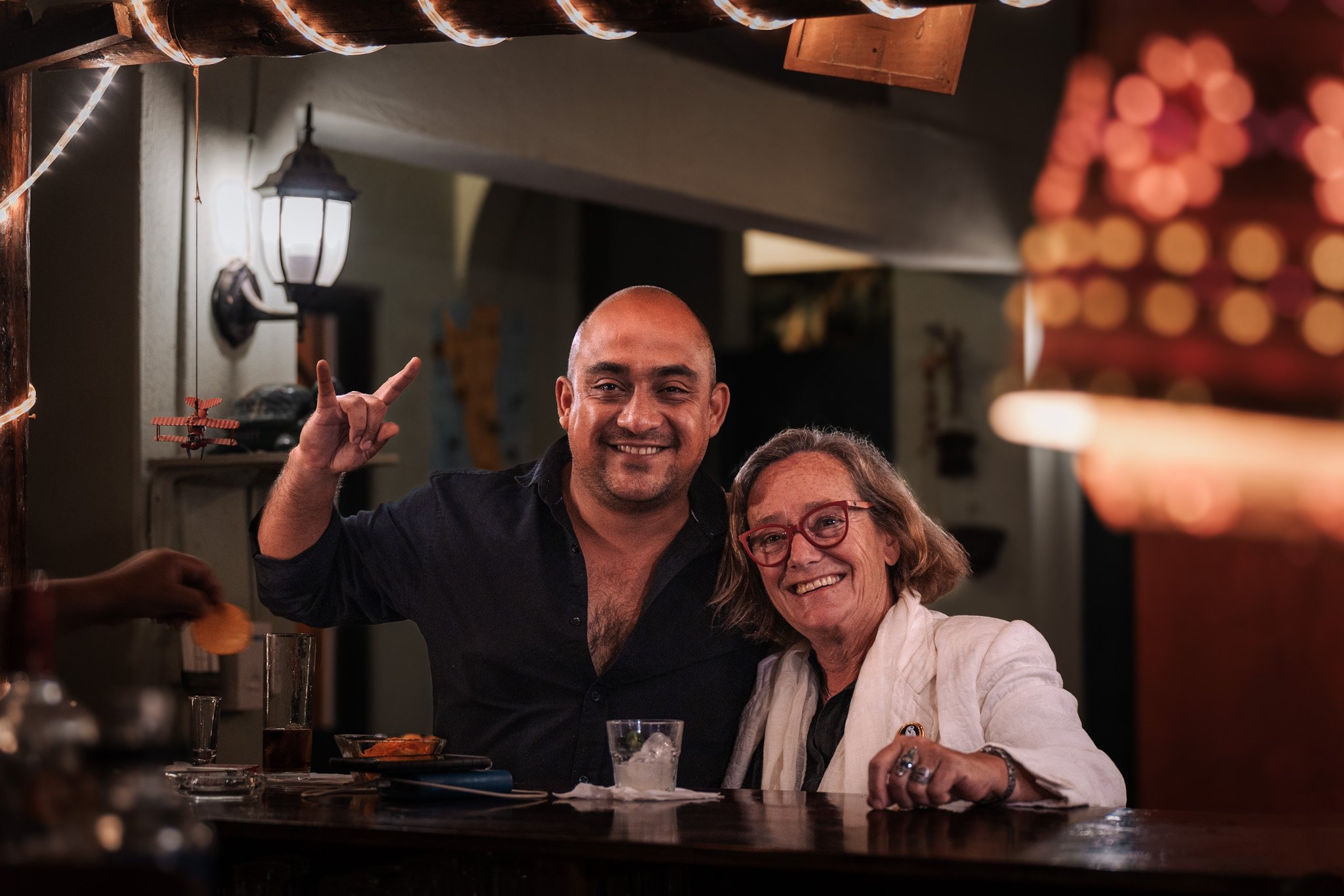Mexico - Baja California Sur
We decide to give our wrists, which have been shaken by the last few weeks, a little more rest and ride the first day in Baja California Sur on the very quiet highway. After a relaxed 150 km with tailwind through very monotonous desert landscapes, we come to San Ignacio. The small idyllic village is located in a basin at the foot of a mountain range on a river bed. It seemed like an oasis, for the first time we see surface water and palm trees, everything shines in green and many birds can be discovered. We have been setting up our tent for what feels like an eternity once again on grass and enjoy a fiery red evening sky.
In the morning we strengthen ourselves at the market square before we head back towards the Pacific coast and bare landscapes.
This stretch of coast leads us through huge, dried-out bays. The adjacent lagoons are very well known for their grey whale tours. Once a year, the sea creatures make a pilgrimage to this place to give birth. They interact curiously with tourist boats during this time. Unfortunately, we were a little too early in the season and all the boats were still dry.
We can fill up with water in two small fishing villages.
Very exhausted, we reach San Juanico after three days. We feel that our bodies need a real break and so we rent a small bungalow in Cholie and Mike's surf camp. Good food, time on the beach and lots of fruits should make us fit again.
After our little break, we ride to Ciudad Constitution, from where we will cross for the first time through the Sierra Gigante mountain range to the other side of the coast. First, however, it goes through the landfill outside of the city. There is practically no waste separation. Residents of the city, restaurants and companies simply unload their leftovers on the side of the road and burn them. An unbearable stench of decay is in the air - only the unload of car tires is prohibited.
Crossing the Sierra Gigante is the most beautiful section of the Baja Divide for us to date. We like the colors of the forests very much and we enjoy the offer of small oases with water, which we can now filter and no longer have to carry everything on the bikes.
At the highest point of the stage, we see the Sea of Cortez (the Gulf of California) for the first time. A great blue extends to the horizon, the mainland is not visible from here. However, the summit and the entire descent to San Evaristo are so blocked that it is impossible to ride for us.
San Evaristo is located in a beautiful bay. In addition to a small kiosk and a restaurant whose customers are mainly sailors, there is not much here. We listen to a conversations of a group of sailors at the neighboring table and our eyes reveal that "sailing around the world" could also be something for us... - But now back to the saddle!
We set up our camp a few kilometers further in our very private bay with beach access. The water in the Gulf is so much warmer than in the Pacific, so that for the first time we don't feel like a wimp when we plunge into the waves.
The stretch of coast up to La Paz drags on for a few days and the legs get tired. However, the color splendor of the rock layers compensates immensely.
Starved by the "food" of recent weeks, which consisted mainly of tortillas with beans, we rush to the churro stand best rated by Google in the big city of La Paz and the Malecón (beach promenade) - the dessert of the Mexicans.
In the harbour you can still see some traces of Hurricane Norma, which recently moved over the city. Over 60 boats have tipped or sunk. Great paintings decorate the whole city.
La Paz is and is not the end of the Baja Divide. The Cape Loop is still ahead of us, the surrounding of the southern tip of the Peninsula. 420 km along the coast, half of it unpaved. However, it turns out to be easy to ride with only a few pushing and daily shopping opportunities.
The route also leads trough Cabo Pulmo National Park, the largest coral reef on the west coast of North America. The reefs are very flat and so we decided against diving and take the snorkel instead. Hardly your head under water feels like you're in an aquarium. The coral diversity is not so pronounced here, but in addition to the countless colorful fish, we find ourselves in the middle of a Jack Fish Tornado, see dolphins and swim alongside seals and beak turtles.
Along the countless beaches we see many ownerless dogs looking for a meal next to the tent.
The city of San José del Cabo has a beautiful old town center, but the rest is designed for tourists from the USA and Canada. It is comparable to Platja de Palma in Mallorca - after a cocktail we move on.
Back in La Paz, of course, it's time to go back to the churro stand. The spritz biscuits rolled in sugar and cinnamon really impressed us.
Then it happened: the camera bag falls off the chair and our most important filter brokes. No chance to get a replacement here and Santa Claus only delivers under the domestic Christmas tree. For better or worse, we have to book a flight and spend the holidays with our families in Germany. Meanwhile, the Mexicans buy their piñata, a ball with 7 tips - which are supposed to stand for the seven deadly sins. Symbolically, evil will be smashed and the falling sweets stand for the blessing.
Until departure, we clean and maintain the bikes.
For the two weeks in Germany, Silvia will take care of our bikes. We already met her at our first stop in La Paz and were immediately on the same wavelength. Silvia comes from Italy and runs a great Italian restaurant in her garden. In addition to the great cuisine, there are good drinks at the bar, always live music and the guests storm the dance floor - salud!










